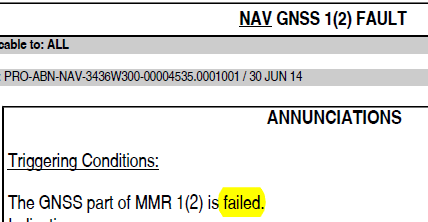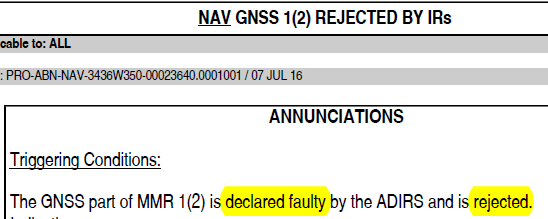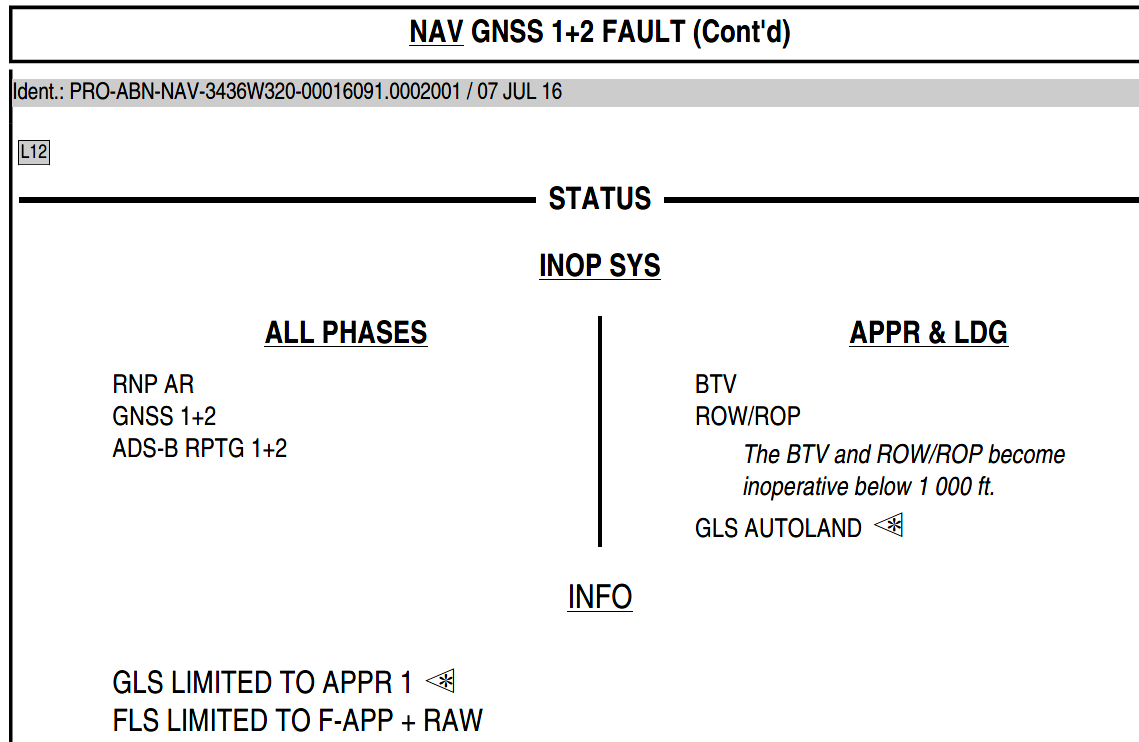这两个警告的触发条件很相似,有点让人迷惑。另外 GNSS 被 IR 拒选之后的不工作系统其实很少,还可以执行 GLS AUTOLAND 或者 FLS。空客解释是 FAULT 是同时被 ADIRS 和 MMR 探测到故障,而 REJECTED 是 ADIRS 探测到故障。具体请参考 TechRequest 原文:
Q:
NAV GNSS 1(2) FAULT
&
NAV GNSS 1+2 FAULT
&
NAV GNSS 1(2) REJECTED BY IRs
&
NAV GNSS 1+2 REJECTED BY IRs
What's the difference between REJECTED BY IRs and FAULT? The INOP SYS of GNSS 1+2 REJECTED BY IRs is less than GNSS 1+2 FAULT. For example, can we make GLS AUTOLAND or FLS even when GNSS 1+2 REJECTED BY IRs?
A:
The alert NAV GNSS 1(2) FAULT is triggered when the GNSS partition of MMR 1(2) is detected faulty by ADIRS and declared faulty or lost by the MMR. The NAV GNSS 1(2) REJECTED BY IRs alert warns that the GNSS partition of MMR 1(2) is detected faulty by ADIRS but not declared faulty or lost by MMR. The same principle applies for NAV GNSS 1+2 FAULT and NAV GNSS 1+2 REJECTED BY IRs.
When one or both GNSS are rejected by IRs, it means that only the path between IRs and GNSS is lost. Therefore, GNSS are still operative and continue exchanging data with the other systems. In this case, the INOP SYS list is limited compared to the one displayed in case of GNSS fault.
In particular, when NAV GNSS 1+2 REJECTED BY IRs is triggered, the GLS autoland and FLS capabilities remain available.




